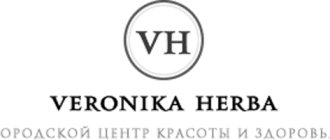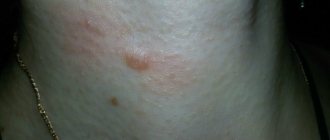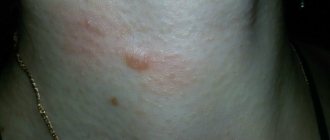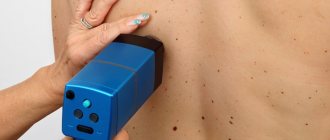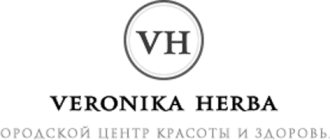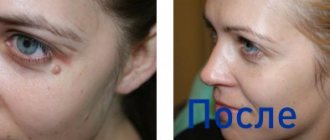An infectious or viral pathogen can easily penetrate into the bloodstream through an injured mole; also, trauma to a nevus is often accompanied by hemorrhage. In addition, there is a risk of a healthy mole degenerating into a pathological neoplasm, so it is better to get rid of some nevi in advance. Since the use of liquid nitrogen practically does not provoke the formation of scars and cicatrices, the removal of moles by this method is widely used in cosmetological and dermatological practice.
Indications for cryodestruction of moles
Individual indications for this procedure are determined by the doctor after examining the nevus using an electron-optical device (dermatoscope). In some cases, to clarify the feasibility of cryodestruction, a preliminary cytological examination of the nevus is performed. The main indications for removing moles with liquid nitrogen are:
- regular injury to the nevus;
- change in color, size or consistency;
- itching, pain, discomfort in the mole area;
- aesthetic considerations.
Cryodestruction has many advantages compared to the method of classical excision and electrocoagulation.
How is papillomas removed by cryodestruction?
A few seconds of exposure to liquid nitrogen is enough for the neoplasm to collapse
Using the example of papilloma, we will look at how the procedure for removing a tumor with liquid nitrogen is carried out. The process can be divided into the following stages:
1. Freezing papilloma. Using a special device or miniature applicator, the doctor applies liquid nitrogen with a temperature of –195.7 degrees Celsius to the tumor.
2. Necrosis of papilloma. Under the influence of liquid nitrogen, the pathological area turns pale, the patient begins to feel a slight tingling: this is the crystallization of the cytoplasm in the neoplasm cells, which damages their membranes. The time allotted for the procedure (from 5 to 30 seconds) is quite enough to cause irreparable damage to the papilloma.
3. Restoration of blood circulation. Within a few hours after the procedure, the area of skin where the papilloma was located turns red and swells.
4. Complete necrosis of papilloma. The process takes from 2 weeks to 2 months. From the neoplasm itself, only a crust remains, and healthy, smooth tissue forms under it.
5. Recovery. After a maximum of six months, there will be no traces left on the skin.
If the papilloma was large enough, the procedure may need to be repeated. In this case, only a doctor can give the exact timing of the final solution to the problem.
If after cryotherapy a bubble with liquid appears at the site of the tumor, it is not recommended to pierce it. It is better to treat the skin area with an antiseptic until this bubble disappears naturally, or consult a dermatologist for advice.
Removing moles with nitrogen: features of the procedure
Removal of a mole by cryodestruction is carried out using the application of liquid nitrogen. Features of the procedure depend on the type of applicator. If the mole is superficial, it is permissible to use a cotton swab on a wooden stick, which is dipped into a container with a cold substance, after which this cotton swab is applied to the mole for a few seconds. The downside of this procedure will be the risk of damage to healthy tissue surrounding the nevus.
A cylinder filled with a low-temperature substance and having a removable tip can also be used. This procedure is very productive and is practically not accompanied by complications such as injury to nearby tissues, since the balloon is supplied with removable tips of different diameters, which makes it possible to select the appropriate diameter for each specific case. The circumference of the tip should be several millimeters larger than the nevus, this is necessary so that all structures of the nevus are subjected to cold treatment.
The third method of cryodestruction of moles, which is actively used in clinical practice, is the application of a cold substance using an aerosol. When sprayed, the cold jet can hit healthy tissue and damage it. In addition, removal of moles by this method is not used for nevi that are deeply rooted, since destruction may not occur in all structures of the mole.
How does the procedure work?
The mole removal process lasts about 3 minutes, there is no pain, and the patient does not need painkillers. If the procedure is performed on the face, then the specialist needs to be as careful as possible, because there is a risk of damage to the skin.
The faster freezing is performed using liquid nitrogen, the more efficient the entire procedure and recovery stage are. Damaged skin and healthy areas that are located next to the growth are regenerated.
Stages:
- The tissues are frozen and within a few minutes become dense and insensitive.
- Collateral edema then appears and lasts about 3 hours.
- Bubbles appear and disappear after a day.
- Necrosis disappears within 4 weeks.
- Complete regeneration of damaged integument occurs in approximately 4-6 months.
In order for the spraying of liquid nitrogen to be as accurate and effective as possible, you need to contact only good clinics and salons where experienced professionals work. With the right approach, you can get rid of unpleasant moles and warts quite quickly. Absolut Med in the Northern Administrative District of Moscow could be such a clinic for you.
Recovery period after cryodestruction of moles
During the process of cryodestruction of moles, the area that is subjected to cold treatment loses sensitivity and acquires a whitish color. In this case, the patient may experience subjective sensations such as burning or tingling at the site of exposure. There is no significant pain during cryodestruction.
The healing and regeneration period includes the following stages:
- During the first day, an inflammatory process occurs in the area of the treated area, which develops against the background of destruction of nevus tissue. After this, granulation tissue is formed, visually resembling a crust;
- after a week, the process of regeneration of tissue structures in the area of the removed nevus begins (new epithelial tissue appears);
- Complete restoration of tissue elements occurs after a month and a half. At this stage, absolutely healthy tissue appears at the site of cryodestruction, without defects or signs of cold exposure.
Removal of warts with liquid nitrogen, cryodestruction
Liquid nitrogen is a colorless liquid that boils at room temperature and emits thick steam. It is actively used in cosmetology for the removal of warts, moles, papillomas and other benign neoplasms. This procedure for removing papillomas is safe and painless and is performed without anesthesia.
After removing papillomas, warts, moles or other formations, you can immediately wash the skin with any detergent. The procedure completely eliminates bandages, plaster sealing and other methods of protection from moisture. In some cases, experts recommend treating the area where the tumors were with a solution of potassium permanganate for three days. Often, already on the 3-7th day after the cryodestruction procedure, any formations on the skin dry out, become crusty and fall off on their own. There are no spots or scars left at the site of moles and other neoplasms, the skin is smooth and clean.
During cryodestruction, the doctor applies a cotton swab pre-moistened in liquid nitrogen to the wart or any other neoplasm. As a result of cauterization, the neoplasm turns white, then turns red and is completely rejected on the 10-14th day.
Care after cryodestruction of moles
The crust that forms during the first day after removal of a mole using cryodestruction prevents the introduction of infectious, viral and other pathogenic microelements into the body. The patient must ensure the preservation of this crust until its physiological rejection occurs. Under no circumstances should this crust be peeled off on your own, since the process of restoration of damaged tissue will be disrupted and a scar may remain in the area that was subjected to cryodestruction. In addition, when the crust is mechanically removed, a wound surface appears, acting as an entrance gate for any infection.
You should not apply cosmetics to the cold-exposed area, and you should also minimize the ingress of water into this area.
If there are pathological changes during the healing period, you must consult a specialist. Symptoms of the pathological course of the rehabilitation period after cryodestruction include:
- local hemorrhage;
- severe swelling of the soft tissues around the wound;
- redness of the skin around the cryodestruction area, which does not decrease, but gradually becomes more widespread;
- the presence of purulent discharge from the wound;
- general hyperthermia, etc.
During the recovery period, it is necessary to exclude exposure to sunlight on the area of the skin that has undergone cryodestruction. To speed up tissue regeneration processes, the doctor may recommend the patient to use wound healing gels. This treatment is only advisable during the first three weeks after the procedure. Some patients may experience itching of the skin in the area where the mole was previously located. For such patients, the use of antipruritic ointments is indicated during the rehabilitation period. It is strictly contraindicated to independently select symptomatic treatment; recommendations on wound care should be given by a doctor, taking into account the individual characteristics of the body and contraindications.
How not to make a mistake when choosing a mole removal method?
Moles or nevi are small, usually brown formations on the skin that are found in virtually every person. They can be congenital or appear during puberty, during pregnancy, menopause, after prolonged exposure to the sun or tanning in a solarium. According to their structure, moles are divided into pigmented and vascular. Pigmented nevi include freckles, flat and raised moles; melanin pigment gives them a dark color. This substance protects our skin from ultraviolet damage. People with dark skin have more of it, and people with light skin have less. Vascular moles are formed due to abnormalities in the development of skin capillaries; they have a characteristic red color. Their shape can be very different - from a speck to a noticeably protruding nodule.
Usually nevi do not cause much concern, but in some cases there are indications for mole removal. This must be done if the mole is located on the face, spoils the appearance and causes severe psychological discomfort. Also subject to removal are moles located in places subject to mechanical damage - under the hair, on the neck, in the armpits, under the breasts, in the groin and other areas where they are rubbed by clothing or injured during a haircut or shaving. In cases where a mole begins to become inflamed, itchy, change color or increase in size, you must make an appointment with a dermatologist-oncologist. The doctor conducts an examination, prescribes a scraping, puncture or performs a dermatoscopy. This is necessary in order to promptly detect signs of degeneration of an invisible mole into a malignant melanoma tumor.
Now in St. Petersburg and other cities there are many clinics offering the removal of moles, papillomas, and warts using various methods. The most widely used methods are:
- Surgery with a scalpel;
- Cryodestruction or freezing with liquid nitrogen;
- Electrocoagulation;
- Laser mole removal;
- Radio wave surgery.
Surgical removal using a scalpel
- a simple and widespread way to get rid of a mole. Before the operation, it is necessary to undergo tests for infections transmitted through the bloodstream - HIV, syphilis, hepatitis B and C. The duration of the procedure depends on the size of the nevus and the qualifications of the doctor.
The advantages of this method are its simplicity and affordable cost. Disadvantages - pain, high trauma, the need for cosmetic stitches, and a scar may remain after removal. With this method, the removed mole is sent for histological examination. I recommend this method if there is the slightest doubt about the good quality of your mole.
Laser mole removal
– evaporation of a nevus by heating tissue up to 300 degrees Celsius with a narrowly directed laser beam of a strictly defined wavelength. Most often, this method is used to remove moles that protrude above the skin. The advantages of this method are speed of removal, low likelihood of bleeding, and relative painlessness.
The recovery period after laser mole removal takes from two weeks to a month. The duration of this period differs little from other methods. At this time, it is worth limiting your time in the sun and using special hydrophilic cosmetics. Contraindications and complications typical for laser removal are described in detail here.
Cryodestruction or removal of moles with liquid nitrogen
– with this method, the tumor is frozen to a temperature of -190ᵒC, which causes tissue death. This method is recommended for removing raised and hanging moles. At the site of the removed nevus, a crust forms, under which healthy tissue grows.
The disadvantages of this method include high trauma and a long recovery period, as well as the lack of the possibility of histological examination. During cryodestruction, it is not always possible to accurately control the depth of freezing; the procedure may need to be repeated if the tumor is not completely removed.
Electrocoagulation
– with this method, an electric current is applied to the mole, which literally burns out the tumor tissue. This is one of the most common methods of removing skin tumors. As in previous cases, a depression covered with a crust remains at the site of the tumor.
The disadvantage of this method is the high risk of scar formation and a long recovery period.
Removing moles using radio wave surgery
–
the most modern and safe method
.
As a result of directed radio wave exposure, the thinnest layer of tissue around the nevus “boils” and evaporates. The procedure itself lasts no more than 15 minutes, the mole is removed without hospitalization and the need for stitches. All removed material is sent for histological examination.
The advantages of removing moles using radio waves are minimal pain and trauma, excellent cosmetic effect, no bleeding, and rapid healing of the skin. I would also like to note that in our clinic since 2011, not a single complication has been registered after removal using the radio wave method.
We invite you to make an appointment with an experienced oncodermatologist and, if indicated, remove moles using the radio wave method using modern equipment.
Possible complications after cryodestruction of moles
After exposure of nevi to liquid nitrogen, the risks of complications are minimal. However, in rare cases, some patients may experience the following complications:
- allergic reaction to cold exposure (with incomplete collection of anamnestic data);
- damage to healthy tissues by liquid nitrogen. This complication may occur if nitrogen removal is performed by a specialist who does not have the appropriate practical skills;
- wound infection after mole removal (failure to follow doctor’s recommendations regarding wound care);
Sometimes, due to failure to follow the rules for caring for the wound surface, a scar forms at the site of the removed mole or pigment spots appear.
Attention!
This article is posted for informational purposes only and under no circumstances constitutes scientific material or medical advice and should not serve as a substitute for an in-person consultation with a professional physician.
For diagnostics, diagnosis and treatment, contact qualified doctors! Number of reads: 1057 Date of publication: 08/27/2018
Dermatologists - search service and appointment with dermatologists in Moscow
When is it necessary to remove moles?
The first signal that a mole needs to be urgently removed before it causes damage to health is its growth, change in color and shape, as well as bleeding and some pain. It is also worth consulting a doctor if the number of moles on the skin begins to increase rapidly and rapidly. In this case, removing the mole is a radical method of its so-called treatment. In fact, this is the best prevention for the transformation of moles into malignant tumors. But it is worth remembering that any removal of a mole should only occur with the approval and prescription of a doctor, by licensed and qualified specialists.
Cost of cryodestruction of tumors
| Cryomassage and cryodestruction of benign neoplasms |
| Service code | Service name | Number of services | Price |
| A24.01.004.001 | Cryodestruction of skin: removal of papillomas, keratomas, warts, condylomas (up to 0.5 cm 1 element) Code: A24.01.004.001 | 1 | 500 ₽ |
| A24.01.004.002 | Cryodestruction of the skin: removal of papillomas, keratomas, warts, condylomas (0.5 - 1.0 cm. 1 element) Code: A24.01.004.002 | 1 | 1 000 ₽ |
| A24.01.004.003 | Cryodestruction of the skin: removal of papillomas, keratomas, warts, condylomas (more than 1.0 cm, 1 element) Code: A24.01.004.003 | 1 | 1 500 ₽ |
| A24.01.005 | Skin cryomassage (1 zone, 1 procedure) Code: A24.01.005 | 1 | 800 ₽ |
Which is better: cryodestruction or laser removal
The difference between cryodestruction and laser removal of tumors lies in the technique of the procedure and the duration of the postoperative period.
- During laser removal, the growth is evaporated, and during cryodestruction, its tissue is frozen.
- Larger formations in skin folds and mucous membranes are removed with laser, and small ones in open areas of the body are removed with liquid nitrogen.
- Laser removal is more accurate, therefore it damages less tissue, but leaves an open wound. Cryodestruction covers a larger area, but is considered less painful and does not require anesthesia.
Only a doctor can choose the appropriate removal method. You can find out whether cryodestruction is suitable for your case or whether you should choose another method at an appointment at Dr. Kurenkov’s clinic. We are waiting for you in Moscow at Rublevskoye Shosse, 48/1.




